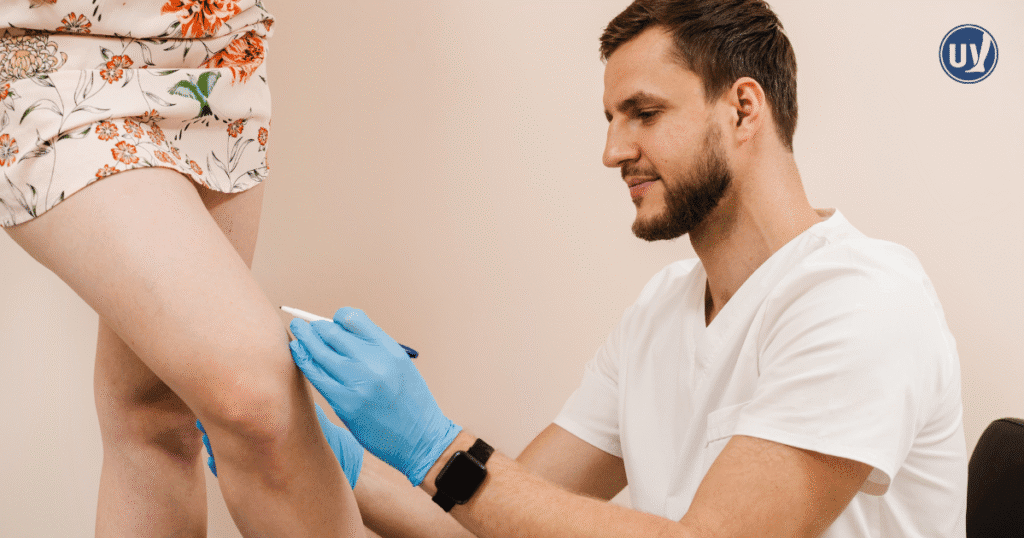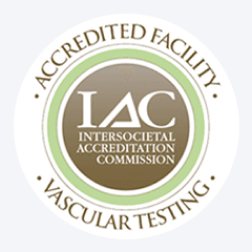Vein disease is more than just a cosmetic concern—it’s a condition that can quietly progress and impact your health in serious ways. Ignoring symptoms like leg pain, swelling, or skin changes may seem harmless at first, but over time, untreated vein issues can lead to chronic discomfort and even serious complications.
From worsening varicose veins to chronic venous disease, untreated vein problems can affect your mobility, daily life, and overall well-being. In some cases, complications like leg ulcers, infections, or blood clots may arise. The good news? Early detection and treatment can prevent these outcomes, helping you protect your health while restoring comfort and confidence in your legs.
Understanding the risks of untreated vein disease empowers you to take action. Whether through lifestyle adjustments or advanced medical procedures, addressing vein issues proactively can make a lasting difference in your quality of life.
Understanding Vein Disease: Causes and Risk Factors
Vein disease occurs when veins in the legs fail to circulate blood properly. This can lead to pooling of blood and visible veins. Understanding the causes helps in recognizing and preventing the condition.
Several factors increase the risk of developing vein disease. These include age, family history, and prolonged periods of standing or sitting. Women may experience higher risks due to hormonal changes during pregnancy or menopause.
Lifestyle factors also play a crucial role. Being overweight or obese can contribute to vein issues. A sedentary lifestyle may exacerbate the problem by reducing blood flow.
By identifying these factors, individuals can take preventive measures. Regular exercise, maintaining a healthy weight, and periodic leg elevation can support vein health. Understanding the roots of vein disease is a vital step in managing and preventing it.
Common Symptoms and Early Warning Signs
Early symptoms of vein disease can be subtle but notable. Recognizing these signs early can prevent serious complications. Leg heaviness and aching are common indications of vein issues.
Swelling is another frequent symptom. This may occur around the ankles and calves, often worsening by day’s end. Skin changes, like discoloration, can be early warning signals as well.
To identify potential vein disease, watch for:
- Leg heaviness or aching
- Swelling in ankles or calves
- Visible, bulging veins
- Skin discoloration or texture changes
Detecting these signs enables prompt medical consultation. Early treatment can mitigate progression and enhance quality of life. Paying attention to these warning signals is essential for timely intervention. Addressing symptoms early can prevent vein disease from worsening.
The Progression of Untreated Vein Disease
When vein disease is left untreated, it often progresses gradually. The symptoms and complications can increase over time, making intervention crucial. Initial signs may seem minor but can evolve into significant health issues.
As the condition progresses, the symptoms can intensify. You might notice increased swelling, and aching becoming persistent. Untreated varicose veins can also lead to visible skin changes and increased discomfort.
If vein disease continues untreated, risks of severe complications, such as chronic venous insufficiency, grow. This advanced stage can drastically affect your mobility and quality of life. It’s important to address these symptoms early to prevent such progression. Ignoring these signs can lead to irreversible damage, underscoring the importance of seeking medical advice promptly.
Physical Consequences of Untreated Varicose Veins and Leg Vein Issues
If untreated, varicose veins can lead to significant physical consequences. The appearance of twisted and bulging veins is more than a cosmetic concern. It’s a sign of deeper vascular issues that need attention.
The most common result of untreated varicose veins is persistent leg pain. This discomfort can interfere with daily activities. It can make standing or walking for extended periods challenging.
Other consequences include skin changes. The skin over the affected veins may become thin and fragile. It might change color, becoming darker or reddish-brown.
Ulcers can form in severe cases, particularly around the ankles. These open sores are painful and susceptible to infection, complicating treatment further. Dealing with these physical consequences requires timely medical intervention. Recognizing these symptoms early and seeking treatment can prevent severe outcomes. Taking action before complications arise can improve both your comfort and overall health.
Chronic Venous Disease: Long-Term Health Risks
Chronic venous disease (CVD) can develop when vein disease persists untreated. It signifies ongoing problems in the leg veins, affecting blood flow. This condition requires vigilant management to prevent complications.
One of the major risks of CVD is the development of venous insufficiency. This occurs when vein walls or valves don’t function properly. It leads to improper blood flow and pooling in the legs. Over time, this pressure can increase, causing further damage to the venous system.
Managing chronic venous disease involves regular monitoring and treatment. Without intervention, these risks can escalate, potentially leading to serious health consequences. Educating yourself about CVD risks and working with healthcare providers can aid in effective management. Early recognition and treatment are crucial in avoiding the progress of chronic venous complications. Always consult a healthcare professional if you notice any new or worsening symptoms. This proactive approach can help preserve your overall vascular health.
Impact on Quality of Life and Mental Health
Vein disease doesn’t just affect physical health. It can also impact your mental and emotional well-being. Patients often experience a decline in life satisfaction due to persistent discomfort and reduced mobility.
Chronic vein issues can lead to anxiety and depression. The visible symptoms, like varicose veins, may cause embarrassment or self-consciousness. This can lead to social withdrawal and isolation, amplifying feelings of distress.
Addressing vein disease early can help improve not just physical health but mental health too. Awareness and proactive care are crucial for maintaining overall quality of life.
When to Seek Medical Help: Recognizing Serious Symptoms
Timely medical intervention can prevent severe complications. It’s vital to recognize concerning symptoms and act promptly. Keep an eye out for:
- Persistent leg pain or heaviness
- Noticeable swelling or discoloration
- Development of open sores or ulcers

These signs may indicate progression to a more serious condition. If you experience any of them, consult your healthcare provider without delay. Early detection and treatment can make a significant difference in managing vein disease effectively.
Treatment Options for Vein Disease
Treatment for vein disease has advanced significantly. There are multiple options to suit different needs. Your healthcare provider can guide you to the right choice.
Non-invasive treatments are often the first step. Lifestyle changes are also integral to managing vein disease. Incorporating these changes helps maintain vein health long-term. Eating a healthy diet and staying active support these treatments.
Discuss all available options with your healthcare provider. This dialogue will empower you to make informed decisions. Tailoring treatment to your individual needs is essential for the best outcomes.
Preventing Vein Disease Progression: Lifestyle and Self-Care Tips
Taking proactive steps can prevent vein disease from worsening. Simple lifestyle changes play a critical role. Small adjustments offer significant benefits for your vein health.
Regular physical activity promotes blood flow. This reduces the risk of complications related to vein disease. Incorporate activities that keep you moving throughout the day.
Wearing appropriate footwear is also important. Shoes with good support can alleviate pressure on your legs. This can make a noticeable difference in your comfort.
Staying informed about your health is empowering. Regular check-ins with your healthcare provider ensure early detection. This knowledge enables you to take meaningful actions to protect your veins.
Don’t Ignore the Signs—Act on Your Vein Health
Untreated vein disease isn’t just uncomfortable—it can lead to serious health risks if ignored. The good news is that proactive care makes a powerful difference. By embracing healthy habits and working with experienced vein specialists, you can protect your health, improve circulation, and restore comfort. At United Vein & Vascular Centers, we’re here to guide you every step of the way with personalized treatment options tailored to your needs. Don’t wait for symptoms to progress—find a UVVC clinic near you today and take control of your vein health.
Frequently Asked Questions
Untreated vein disease can progress from varicose veins and swelling to more serious complications, including chronic venous insufficiency, leg ulcers, infections, and even blood clots.
No. Varicose veins typically worsen over time if left untreated. While lifestyle changes may reduce discomfort, medical treatment is the only way to correct the underlying vein problem.
You should seek medical care if you notice persistent leg pain, swelling, skin discoloration, or bulging veins. Early treatment can prevent serious health risks and improve your quality of life.


